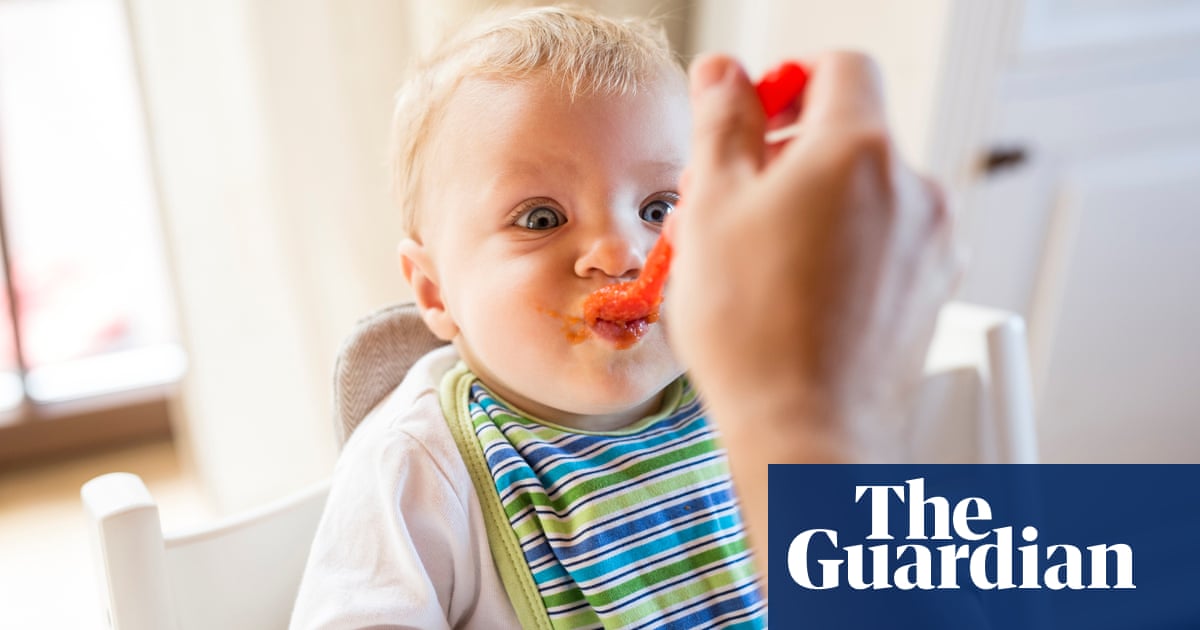Baby food and kitchen staples teeming with toxic plastic additives, study warns – even in GLASS jars

COMMON foods have been found to be teeming with concerning levels of toxic plastic additives by scientists – including baby foods and meals in glass jars.
Baby foods like pureed vegetables and fresh meat were among the foods found to contain high quantities of plasticisers – chemicals added to plastics to make them more flexible and easier to handle.

2
The highest levels were found in microwave-in-a-bag vegetables like broccoli and potatoes.
After just five minutes of cooking , ATBC (a chemical compound used as a plasticiser) in these foods increased 50-fold, according to the new study from experts at the Institute of Environmental Assessment and Water Research in Barcelona, Spain.
Cooking oils were found to contain the least amount of plasticisers, out of the 109 foods studied.
Plasticisers have been linked to a variety of health concerns, including reproductive issues and developmental problems.
Read more on microplastics
In the study published in the Journal of Hazardous Materials, scientists analysed over 100 foods sold in Spanish supermarkets looking for traces of more than 20 different harmful plastic additives.
The foods were categorised into eight groups – baby foods, condiments, fish products, eggs and dairy, meat, oils, fruit and vegetables and cereals, legumes and sweet products.
Products were tested for chemicals before and after cooking.
Concerning levels of the different plastic additives were detected, including organophosphate esters (OPEs) which were found in 85 per cent of the products.
Studies have shown associations between OPE exposure and impacts on respiratory health, endocrine function, and even potential carcinogenic risks.
High levels of tyltributyl citrates (ATCBs) and DEHAs were also detected – chemicals commonly used in food packaging such as clingfilm to make it bendy.
The highest amounts of OPEs, ATCBs and DEHAs were found in meat and baby food.
Phthalates are a type of plasticiser also used to make plastics more flexible, durable and transparent.
Also classed as a ‘forever chemicals’, while some phthalates can be rapidly excreted, many aren’t removed from the body quickly, and may persist for longer periods.
Because of this, many food manufacturers have made use of alternative substances to create plastic packaging.
But the scientists behind this new study say the alternatives may carry as many risks.
Co-author Julio Fernández-Arribas said: “The results presented in this study confirm the presence of various types of plasticisers in foodstuffs, and emphasises the potential source of exposure to new alternative plasticisers whose long-term health effects are under scrutiny.”

2
Interestingly, there were significant differences in DEHA and ATBC levels across foods by packaging type.
ATBC was predominantly detected in foods packaged in glass containers, likely due to migration from plasticised coatings in lids.
While DEHA was mainly found in fresh foods wrapped in plastic.
The long-term effects of microplastics on human health are still not fully understood, though emerging research highlights concerns they may accumulate in the body and contribute to various health issues.
A recent study discovered tiny plastic particles in the arteries of stroke patients with blocked blood vessels.
What are microplastics and why are they a worry?
Microplastics are tiny plastic particles less than five millimetres in diameter.
They come from a variety of sources in our everyday life, from larger pieces of plastic debris, such as from the degradation of bottles, to the tiny beads in personal care products like toothpaste and exfoliants, and synthetic fibres from textiles like polyester and nylon.
We can either ingest them, for example in food and water contaminated with them, or inhale them from the air.
There is growing concern about the potential health impacts of microplastics on both the environment and human health.
When ingested or inhaled, microplastics can cause physical and chemical damage to living organisms.
Studies have shown that they may be involved in inflammation in the body by leading to the release of proteins called inflammatory cytokines.
While these studies are typically small and in animals or cells, inflammation is linked to a range of chronic diseases, including heart disease, autoimmune disorders, and cancer.
Cellular damage has been a key focus of studies on microplastics.
The tiny pieces of plastic have been shown to cause cell death, cause damage via oxidative stress, and interfere with hormone function.
There is also evidence to suggest that microplastics can cause genotoxic effects, meaning they can damage genetic material within cells – raising fears they can contribute to cancer.
The evidence is still evolving for these tiny particles that are barely visible to the naked eye.











